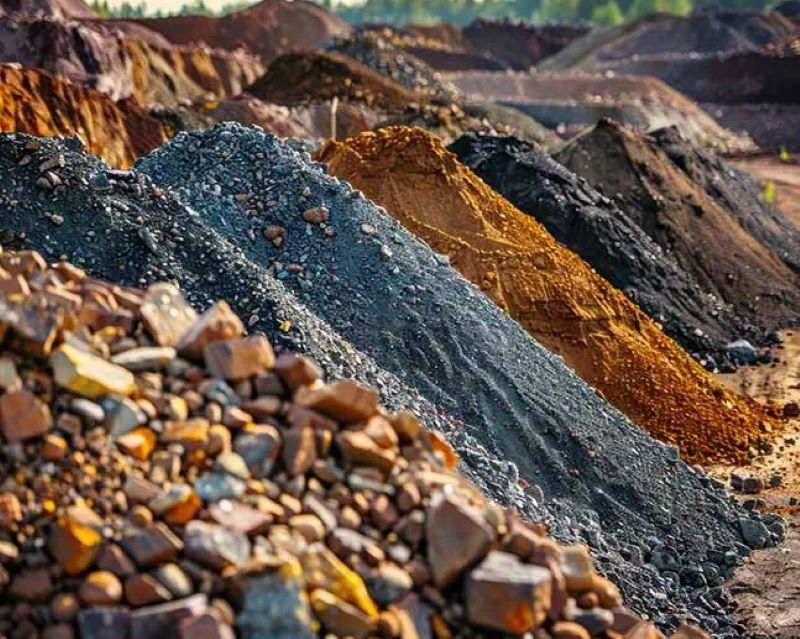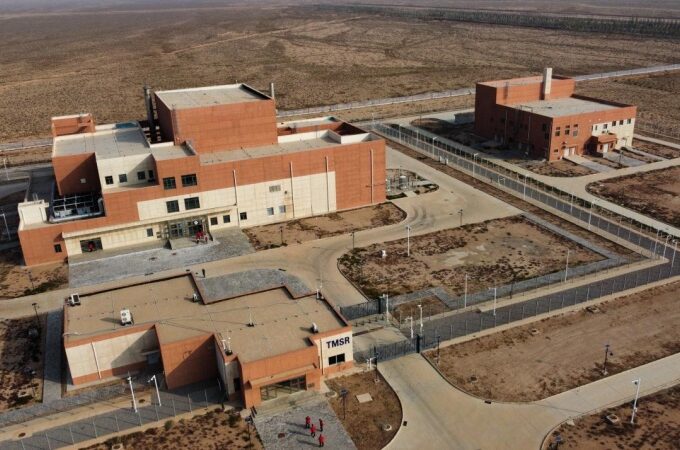For years, the U.S. economy and defense technology have been significantly reliant on key mineral resources globally, with rare earth elements standing out as a critical commodity. However, as global resources become more concentrated and China’s dominance in this sector becomes increasingly evident, the U.S. now faces a serious resource security crisis. Rare earth elements, essential for high-tech industries, military equipment, and the renewable energy sector, are under China’s control, posing a potential threat to both U.S. national security and economic stability.
China’s Control Over the Rare Earth Market
Rare earth elements consist of 17 chemical elements that play an irreplaceable role in the manufacture of advanced electronic products, clean energy technologies, and military equipment. These elements are used in the production of permanent magnets, catalysts, electronics, lasers, and nuclear energy devices. The U.S. has long been dependent on China for these vital minerals. As of recent data, China controls about 60% of global rare earth production and more than 85% of the global processing capacity. This means that most of the rare earth materials, particularly processed ones, are under China’s control.
In this context, China’s rare earth supply is of critical importance to the global economy. These materials are indispensable in the manufacture of various high-tech products, including military equipment, electronic devices, wind energy systems, and electric vehicle (EV) batteries. U.S. dependence on Chinese rare earth supplies not only affects economic growth but could also endanger national security, especially in the event of sudden geopolitical conflicts.
The Importance of Rare Earth Elements to U.S. Defense
The U.S. defense system is particularly reliant on rare earth elements. Rare earths are not only used in the production of advanced weapons systems but are also integral to fighter jets, missiles, satellites, and radar systems. The high-performance and high-temperature resistant properties of rare earth materials make them indispensable in these complex systems. For instance, the F-35 fighter jet’s engine requires rare earth alloys to ensure its performance and reliability under extreme conditions.
If the U.S. cannot produce these crucial minerals domestically or if China takes control of the supply, the U.S. could face a serious national defense crisis. With the changing global geopolitical landscape and rising uncertainty, the rare earth supply chain issue is viewed as a significant vulnerability to U.S. security.

Other Mineral Dependencies: Gallium, Germanium, and Graphite
In addition to rare earths, the U.S. is heavily dependent on imports of other key minerals, particularly gallium, germanium, and graphite. China not only dominates the rare earth market but also controls the majority of global gallium and germanium production, accounting for 90% of gallium and 60% of germanium production. These two materials are critical for the U.S. semiconductor and optical equipment manufacturing industries.
Gallium is widely used in the production of LED lighting, satellite communication, and microelectronics, while germanium is essential for fiber-optic communication, infrared imaging devices, and other high-tech applications. As such, the U.S. could face a technological industry paralysis if it lacks the ability to independently produce these materials during trade disputes or geopolitical tensions.
Furthermore, China dominates the global graphite production, controlling 80% of natural graphite supply. Graphite is a core material in the production of electric vehicle batteries. As the global EV market grows rapidly, the demand for graphite is soaring. The U.S. automotive industry’s green transition would be directly impacted by China’s control over this resource, potentially hindering the U.S. government’s push for renewable energy policies.
China’s Export Restrictions as a Strategic Measure
In recent years, China has intensified its control over key mineral resources, particularly through export restrictions. In 2023, the Chinese government announced a ban on the export of gallium and germanium, a move that immediately sparked widespread concern within global technology industries and the U.S. government. These restrictions directly affect the production of semiconductors and advanced optical devices, which are of strategic importance to the U.S. in the fields of communication, defense, and technology.
With these measures, China further solidifies its influence over global mineral markets, leaving other nations, particularly the U.S., trapped in a deeper state of dependence. In such circumstances, U.S. supply chain security faces significant threats, forcing the government to develop strategies to reduce its reliance on Chinese minerals.
U.S. Strategies to Address the Rare Earth Dilemma
Faced with such a dire situation, the U.S. government has come to realize the critical importance of securing a stable supply of rare earths and other key minerals for national strategy. To alleviate dependence on China, the U.S. has implemented several measures, including boosting domestic rare earth mining, expanding reliance on alternative international suppliers, investing in rare earth recycling technologies, and enhancing cooperation with allies.
In recent years, the U.S. has increased investments in domestic rare earth mining projects, particularly in regions such as the West and Alaska, in an effort to revive and develop domestic rare earth production capacity. However, domestic mining faces environmental, cost, and technological challenges, making it difficult to rapidly scale production in the short term. Simultaneously, the U.S. has expanded partnerships with resource-rich countries such as Australia and Canada to secure more diversified supply sources.
Additionally, the development and application of rare earth recycling technologies have become a critical path for the U.S. to mitigate this dilemma. By recycling materials from used electronic products and EV batteries, the U.S. can reduce its dependence on primary raw mineral sources and improve resource utilization efficiency.
Conclusion
The rare earth dilemma that the U.S. faces is not just an economic issue—it’s a national security concern. The country’s dependence on China for rare earth elements exposes a strategic vulnerability that affects not only high-tech industries and the green energy transition but also the production of military equipment. To address this crisis, the U.S. must accelerate its domestic rare earth mining, explore alternative supply sources, and foster innovation in resource recycling technologies. In an increasingly competitive global resource landscape, the U.S. must adopt more proactive measures to ensure it does not find itself in a passive position in future resource battles.












